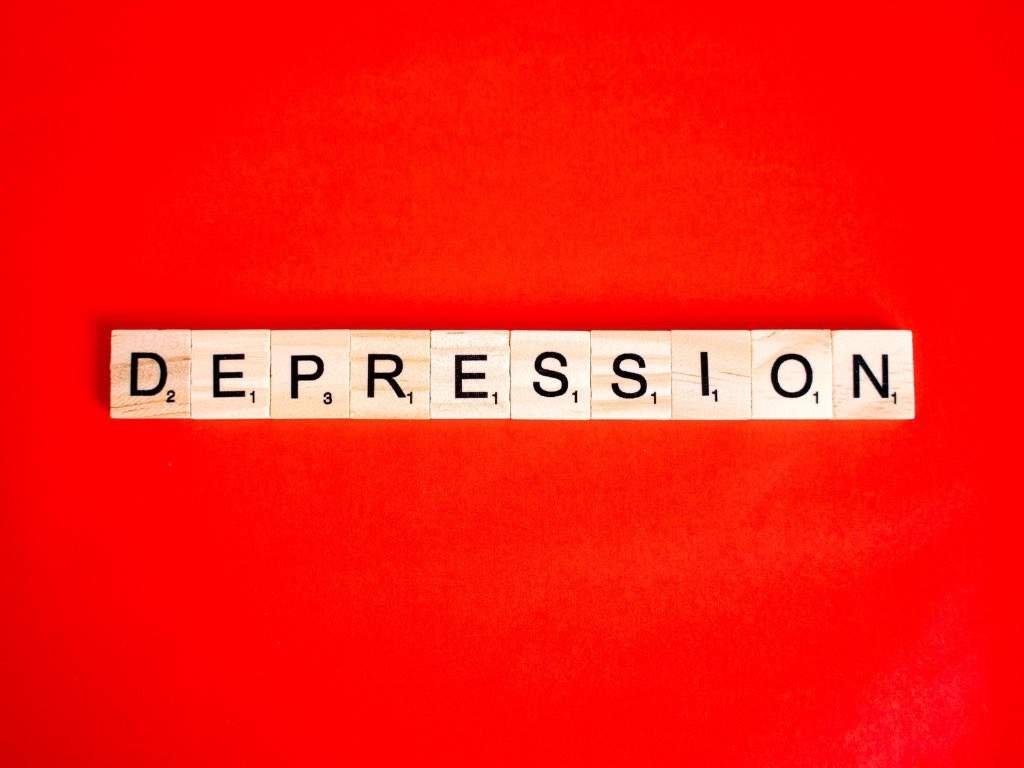What if the fastest way to feel better is not a grand fix, but one small habit you repeat today?
Your mental health affects how you see yourself and connect with others. It also influences how you handle stress. When you face Mental Health Disorders, change often starts with simple steps. You build strength like a muscle—slow, steady, and real.
This article shows how daily routines and effective treatments for mental health can work together. They support lasting progress.
You will learn practical ways for managing mental health. This includes sleep, movement, mindfulness, and time in nature. You will also see why face-to-face support, therapy, and structured care matter when symptoms persist.
Evidence-based care, including medication management and aftercare, helps you stay on track in mental health recovery.
Start small. Choose one or two habits, expect some setbacks, and measure progress over perfection. With clear tools and support, mental health recovery becomes a path you can walk—one step at a time.
Understanding Recovery in the Context of mental health disorders and wellness
You move toward mental health recovery when life feels workable, not just quiet. Recovery means you can think clearly, connect with others, and act with purpose even when stress rises. It is about managing mental health in daily life, not just tracking the symptoms of mental health disorders.
Wellness grows from small choices that build confidence, stability, and hope. When you notice patterns and plan for them, you protect your energy and improve follow-through.
What recovery means beyond symptom relief
Recovery goes beyond the absence of pain. It includes feeling steady, performing well at work or school, and staying engaged with friends and family. You measure progress by how you respond to pressure, not only by the symptoms of mental health disorders.
As you practice managing mental health with care, you grow more flexible. You gain clearer attention, kinder self-talk, and stronger motivation for goals that matter.
How daily habits strengthen resilience over time
Short, steady routines rewire your stress response. Start mornings without screens, add brief walks, and use breathing drills like box breathing or 4-7-8. These habits lower stress hormones and prime your brain for focus.
- Two-minute grounding to notice five sights, four sounds, three touches.
- Movement breaks every 60–90 minutes to reset posture and mood.
- Consistent sleep and a simple wind-down to protect attention.
Such practices make mental health recovery durable, especially when living with mental health disorders. Over time, managing mental health becomes a set of repeatable actions you can trust.
The role of stress management in decision-making and relationships
When you steady your nervous system, choices get clearer and conversations get easier. Mindfulness, deep breathing, and scheduled downtime help you shift into “rest and digest.” That shift supports thoughtful decisions and more respectful dialogue.
- Limit news and social media to set safe inputs.
- Block time for meals, movement, and quiet to prevent overload.
- Use gratitude notes to anchor attention on what is working.
By reducing reactivity, you protect bonds and reduce the symptoms of mental health disorders that flare under stress. This is the core of managing mental health with intention and building lasting mental health recovery.

Building Supportive Connections for mental illness awareness and managing mental health
Strong relationships can lift your mood and ease stress. They help you stay steady when life gets tough. Make sure to spend time with people who make you feel safe.
Start small and make it routine. Send a text to a friend, call a relative, or chat with your barista. Quality is more important than quantity. Focus on a few steady contacts.
Plan activities that make you feel connected. Have weekly family meals or game nights. Reconnect with old friends or join a local group. These steps help manage your mental health.
When worries keep you up, talk to a therapist or your doctor. Early support can guide you to the right care. This way, you can keep your routine while getting help.
- Face-to-face first: Meet for a walk, lunch, or a library visit. Short, regular time beats rare long hangouts.
- Boundaries that fit you: If crowds spike stress, suggest smaller gatherings or shorter events.
- Micro-connections: Say hello to neighbors, greet coworkers, and thank service staff. Small talk reduces isolation.
- Community roles: Join a club, faith group, or sports league. Consistent contact supports treatment for mental health disorders.
- Professional backup: If anxiety or sadness lingers, add therapy to your plan for effective treatments for mental health.
| Connection Strategy | Why It Helps | Simple First Step | Support for Care |
|---|---|---|---|
| Weekly face-to-face meetups | Boosts oxytocin and trust, easing stress | Schedule a 30-minute coffee every Tuesday | Stabilizes routines alongside treatment for mental health disorders |
| Small, trusted circles | Quality bonds reduce emotional load | Identify three “go-to” contacts for check-ins | Improves follow-through with effective treatments for mental health |
| Volunteering in your community | Builds purpose and social ties | Sign up for one monthly shift | Reinforces managing mental health through routine |
| Clear boundaries and requests | Prevents overload and resentment | Limit events to a set time window | Supports mental illness awareness among loved ones |
| Timely professional support | Catches issues before they escalate | Book a screening with a licensed clinician | Aligns social supports with effective treatments for mental health |
You can choose who gets your time, how long you stay, and what you share. Boundaries make room for care, joy, and steady progress.
Keep your calendar realistic. Pair social plans with rest, movement, and meals. Over time, these habits make managing mental health feel lighter and help your network grow in step with mental illness awareness.
Movement and Sleep as Effective Treatments for Mental Health
You can improve your mental health with small steps. Adding movement and rest to your day helps. These actions support your mental health recovery and therapy.
Practical ways to add activity to your day
Short activities can reduce stress and boost your mood. Try a 10-minute walk, choose the stairs, or dance to your favorite song. Even chair exercises help when time is short.
When life gets busy, keep it simple. Walk through decorated neighborhoods, try yoga, skate, or use a resistance band. It’s the regular effort that matters for your mental health.
Creating an evening wind-down routine for better sleep
Signal to your brain that it’s time to sleep. Dim the lights, stretch, and read a book. A short journal entry or mindfulness exercise can calm your mind.
Turn off screens an hour before bed to avoid blue light. Keep your room cool, dark, and quiet. These steps help you sleep better and support your mental health therapy.
Why consistent sleep enhances emotional regulation
Regular sleep improves your mood and focus. A set sleep schedule trains your body clock. This helps you manage stress better.
White noise and blackout curtains can help you sleep better. With steady sleep, you build resilience. This supports your mental health recovery and therapy.
| Action | When to Do It | Why It Helps | Starter Tip |
|---|---|---|---|
| 10-minute brisk walk | Midday slump | Boosts endorphins and clears mental fog | Loop the block while listening to one song |
| Stair intervals | Between tasks | Quick cardio without equipment | Climb for 2 minutes, rest 1, repeat twice |
| Chair mobility routine | During calls | Reduces stiffness and stress load | Roll ankles, march seated, shoulder circles |
| Yoga or gentle stretching | Early evening | Downshifts nervous system | Hold 5 poses for 30 seconds each |
| Screen-free hour | Before bed | Prepares brain for sleep | Set a phone alarm to start wind-down |
| Consistent sleep-wake time | Daily | Steadies circadian rhythm | Anchor wake time, even on weekends |
| Cool, dark, quiet bedroom | Night | Improves sleep depth and recovery | Use white noise and blackout curtains |
Therapy for mental health disorders and when to seek professional care
You can get help anytime. Early support can stop symptoms from getting worse. Many start therapy when stress or daily tasks become too hard. The right care adjusts to your changing needs.
Signs it’s time to reach out for help
Notice changes that last more than two weeks. Feeling more anxious, sad, or on edge is a sign. So is rising irritability or low drive.
Changes in appetite or sleep, trouble focusing, or feeling overwhelmed are also signs. These can mean you need treatment for mental health disorders.
Types of care: inpatient, outpatient, and medication management
Inpatient programs offer 24-hour care and a steady schedule. You get lots of therapy and help with substance use. There’s also medication management and activities like exercise and art.
Outpatient care fits into your life. You go to therapy and groups while staying home. Clinics offer paths for anxiety, depression, and PTSD, with medication when needed.
What to expect from evidence-based treatment and aftercare
Expect a plan that looks at your unique situation. Therapies like cognitive behavioral approaches are used. Your clinician will adjust the plan as you get better.
Aftercare keeps you moving forward. You learn coping skills and join support groups. Regular check-ins and medication follow-up help keep treatment effective over time.
Sensory, Mindfulness, and Relaxation Practices to support mental health recovery
Using sensory grounding can help steady your body and mind. Try the 5-4-3-2-1 method. Name five things you see, four you touch, three you hear, two you smell, and one you taste. This method is great for quick anxiety relief and helps manage mental health.
Make a comfort kit for home or on the go. Include essential oils, a weighted blanket, noise-canceling headphones, or a calming playlist. Try each item to find what works best for you during stressful times.
Guided practices fit into busy lives. Apps like Calm and Headspace offer sessions for any time. Remember to take three deep breaths at lunch and again in the evening to reduce stress.
Simple breathing drills can calm your nervous system. Try belly breathing, box breathing, or the 4-7-8 pattern before bed. These routines help with therapy and improve emotional balance.
Mindfulness is as simple as noticing your feet on the floor. Add a one-minute body scan when you start work. Pair it with journaling to track your feelings and steps forward. These habits make managing mental health easier over time.
Tip: Keep your tools visible. Place your journal by the couch, store your headphones in your bag, and pin a breathing cue on your phone. Consistent cues help turn skills into reflexes during mental health recovery.
- Before stress: open Calm or Headspace for a 3–5 minute primer.
- During stress: use 5-4-3-2-1 and one round of box breathing.
- After stress: journal three lines on what worked and what to adjust.
Link these practices with your care plan. Use them between sessions to extend therapy and strengthen treatments at home, work, or school.
Nutrition, Nature, and Lifestyle Boundaries for sustainable recovery
Strengthening mental health recovery starts with habits that nourish your body and calm your mind. Making thoughtful choices about food, spending time outside, and setting limits with media helps manage mental health daily. These actions also support treatments for mental health from your care team.

Eating patterns that support mood and brain health
Focus on foods that give you steady energy and clear focus. Include beans and legumes, fatty fish, and a variety of nuts. Add avocados, dark leafy greens, and fruits like blueberries and dark chocolate to your meals.
Limit alcohol to protect your sleep and mood. Choose festive nonalcoholic drinks when celebrating. These choices help manage mental health and counter lifestyle factors linked to mental health disorders.
Spending time outdoors to reduce stress and improve clarity
Being in nature lowers stress hormones and improves focus. Try a 30-minute walk in a park or a weekend hike. Even sitting in your backyard with a cup of tea can help.
Regular daylight can ease seasonal mood dips. These habits complement effective treatments for mental health and make recovery feel more steady.
Limiting news and social media to protect your nervous system
Constant news and scrolling can increase anxiety. Limit news checks to once or twice a day. Use social apps during set times and turn off nonessential alerts.
Creating a calmer feed and setting limits helps focus, sleep, and managing mental health. This way, you stay connected without feeling overwhelmed.
Learning to say no and setting healthy boundaries
Overcommitting drains energy and mood. Use phrases like, “Let me check my calendar,” to buy time. Saying no is a yes to your well-being.
In busy seasons, plan ahead, keep routines, schedule me-time, and create traditions that fit your values. These boundaries reduce stressors and keep you engaged with treatments for mental health as you recover.

Mental Health Disorders
You are not alone. Many people in the United States face mental health challenges each year. By midlife, most have had at least one episode. Knowing about mental health disorders can help you take the next step with care.
Types of mental health disorders and common symptoms
Common mental health disorders include depression, anxiety, bipolar disorder, and more. These conditions share signs that something needs attention.
Look out for symptoms like sadness, fear, and feeling overwhelmed. You might notice trouble focusing or withdrawing from friends. Recognizing these signs early can help you get the right support.
Potential causes of mental health disorders and risk factors
Many things can cause mental health disorders. Genetics, brain chemistry, and medical conditions are some. So are trauma, stress, and substance use. Your response to these factors is important.
Small actions can help reduce risk. Try steady routines, stress management, and staying active. These can protect your mental and physical health.
Personalizing treatment for mental health disorders across conditions
Treatment for mental health disorders is tailored to you. It might include therapy or medication. Inpatient care is for when safety is a concern. Outpatient care offers structure with flexibility.
Integrated programs combine therapy with activities like exercise and yoga. If substance use is involved, care addresses both. Plans evolve with you, keeping your path aligned with your goals.
Purpose, Creativity, Gratitude, and Acts of Kindness in mental health recovery
Building momentum in mental health recovery starts with finding purpose. Connect meaning to your work, hobbies, and loved ones. Try a weekly tradition, mentor a student, or help clean a local park. These small steps make managing your mental health feel achievable and hopeful.
Creativity is practical care. Activities like painting, journaling, or playing music can reduce stress and improve focus. These activities help solve problems and boost your self-esteem. Try setting a 15-minute timer and focus on one activity. Notice how your breathing and mood improve.
Gratitude helps you focus on what supports you. Write down three things you’re thankful for each night, send a thank-you text, or appreciate a kind act. This practice can improve your sleep and calm your nervous system, especially during busy times.
Acts of kindness help you connect with others. Help carry groceries, check on a neighbor, or volunteer. These actions raise awareness about mental illness and add meaning to your day.
Start small and be realistic. Begin with one habit and add more as you feel more confident. If you miss a day, don’t worry. Keep going. These practices work well with the treatments you get from your healthcare team.
| Focus Area | Simple Starter | Daily Benefit | How It Supports Managing Mental Health |
|---|---|---|---|
| Purpose | Set one intention before breakfast | Clear priorities and less decision fatigue | Reduces stress loops and guides choices |
| Creativity | 15-minute sketch or free-write | Lower cortisol and better focus | Healthy outlet that complements effective treatments for mental health |
| Gratitude | List 3 specifics in a notebook | Improved sleep and mood stability | Trains attention toward supportive cues |
| Kindness | One helpful act before noon | Stronger bonds and purpose | Builds community and mental illness awareness |
Conclusion
Your mental health affects how you deal with stress, make decisions, and connect with others. Mental Health Disorders do best with simple, consistent habits. Start with small changes like a short walk or a calming routine.
Add activities that ground you, like mindful pauses or spending time outside. Setting clear boundaries is also key. These steps help you recover and stay connected to what’s important.
Setbacks will happen. View them as learning opportunities, not failures. Use tools like evening routines or slow breathing to calm down. Limiting news and social media and staying in touch with loved ones also helps.
These actions help you stay focused and make progress. When problems last, or daily life gets tough, get professional help. Therapy and treatment offer support, skills, and medication management.
Aftercare plans help keep your progress going and prevent slipping back. If you’re in crisis, reach out to crisis lines and local resources. Professional help can boost your recovery efforts.
Begin with a small step today. The journey may not be easy, but it’s doable. Start caring for your mind and body consistently.
FAQ
What does recovery from mental health disorders mean beyond symptom relief?
Recovery is more than just feeling better. It’s about feeling and functioning well. You learn to handle stress and make good decisions. You also keep meaningful relationships strong.Small daily habits add up, like muscles getting stronger. This helps you grow stronger over time.
How do daily habits strengthen resilience over time?
Daily routines like morning intentions and breathing exercises help. They lower stress hormones and calm your brain. Start with one or two habits and focus on progress, not perfection.
How does stress management improve decision-making and relationships?
Stress management helps you think clearly and listen better. It makes communication more constructive. Practices like box breathing and mindfulness are key.
How can you strengthen support and mental illness awareness in your life?
Spend time with people who support you. Plan simple touchpoints like texts or coffee chats. Quality is more important than quantity, and setting boundaries helps conserve energy.
What are practical ways to add physical activity to your day?
Try short walks or dance to a song. Chair exercises and yoga sessions work too. Even brief activity boosts mood and reduces stress.
How do you create an evening wind-down routine for better sleep?
Choose calming activities like stretching or reading before bed. Limit screen time. Keep your room cool, dark, and quiet. A consistent sleep schedule improves mood.
Why does consistent sleep enhance emotional regulation?
Sleep restores brain areas that manage emotions. It stabilizes mood and focus. A steady sleep schedule protects your recovery.
What are signs it’s time to seek professional therapy for mental health disorders?
Seek help if you feel sad, anxious, or irritable. If you have low motivation, appetite, or sleep changes. Or if you feel overwhelmed or stuck.
What types of care are available— inpatient, outpatient, and medication management?
Inpatient care offers 24/7 support and therapy. Outpatient care provides flexible therapy and medication management. Both help you maintain daily routines.
What should you expect from evidence-based treatment and aftercare?
Expect a personalized plan with proven therapies. Support for substance use and ongoing review of goals are included. Aftercare helps sustain recovery over time.
Which sensory, mindfulness, and relaxation tools help during anxiety spikes?
Use the 5-4-3-2-1 grounding method and belly breathing. Box breathing and 4-7-8 are also helpful. A comfort kit with soothing items can also help.
What eating patterns support mood and brain health?
Eat beans, lentils, fatty fish, nuts, avocados, and dark chocolate. Limit alcohol and choose festive drinks instead. These foods support your mood and brain health.
How does spending time outdoors reduce stress and improve clarity?
Nature time lowers cortisol and sharpens focus. Take short walks or sit in the backyard. Even small moments in nature can help.
Why should you limit news and social media for mental wellness?
Constant negative news keeps your stress response active. Limit news and social apps to set times. This protects your nervous system and helps you stay calm.
How do you learn to say no and set healthy boundaries?
Say, “Let me check my calendar.” Choose smaller gatherings if they drain you. Saying no to one request means saying yes to your well-being.
What are common types of mental health disorders and symptoms to watch for?
Anxiety, depression, and bipolar disorder are common. Look out for persistent sadness, irritability, and low motivation. Also, watch for appetite and sleep changes, and impaired daily functioning.
What causes mental health disorders and who is at greater risk?
Causes include genetics, brain chemistry, and trauma. While you can’t control everything, your habits and choices can help. They can buffer stress and support recovery.
How is treatment for mental health disorders personalized across conditions?
Treatment is tailored with evidence-based therapies and medication. Plans address root causes and co-occurring substance use. Aftercare supports long-term recovery.
How do purpose, creativity, gratitude, and kindness support mental health recovery?
Meaningful work and play, creative outlets, and acts of kindness reduce stress. They strengthen connection and build resilience. These practices last beyond symptom relief.
How should you start building routines for mental health recovery?
Start with small habits like a 10-minute walk and a screen-free wind-down. Expect setbacks but keep going. Consistency compounds, and support is available if needed.




